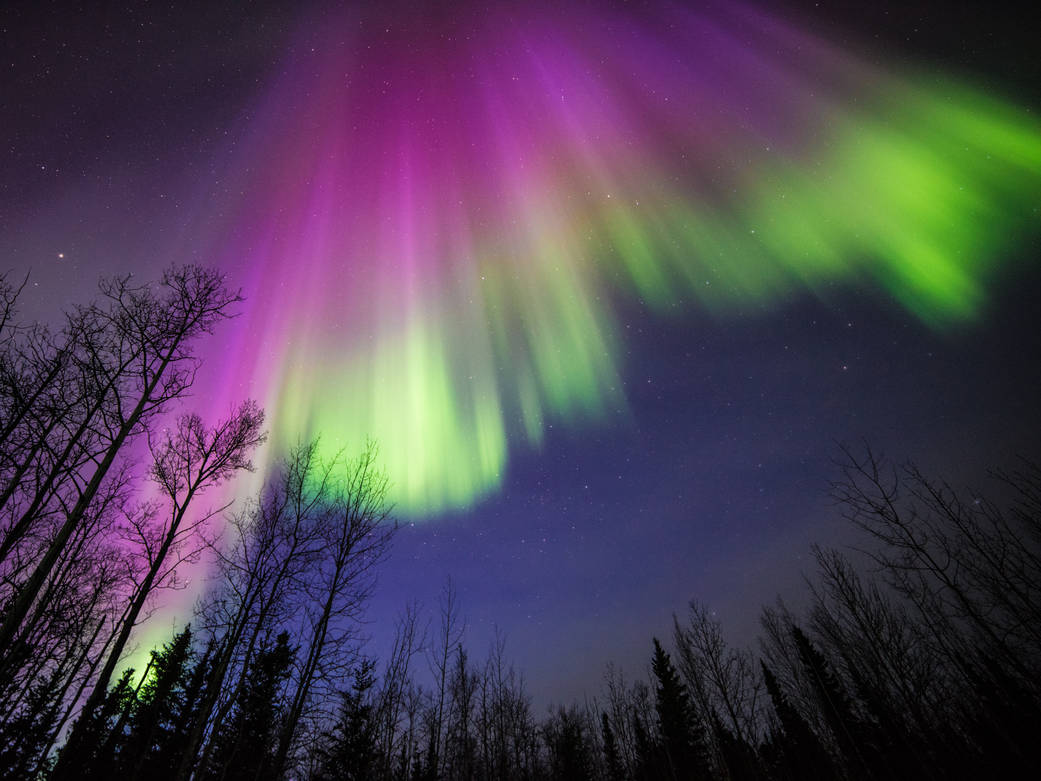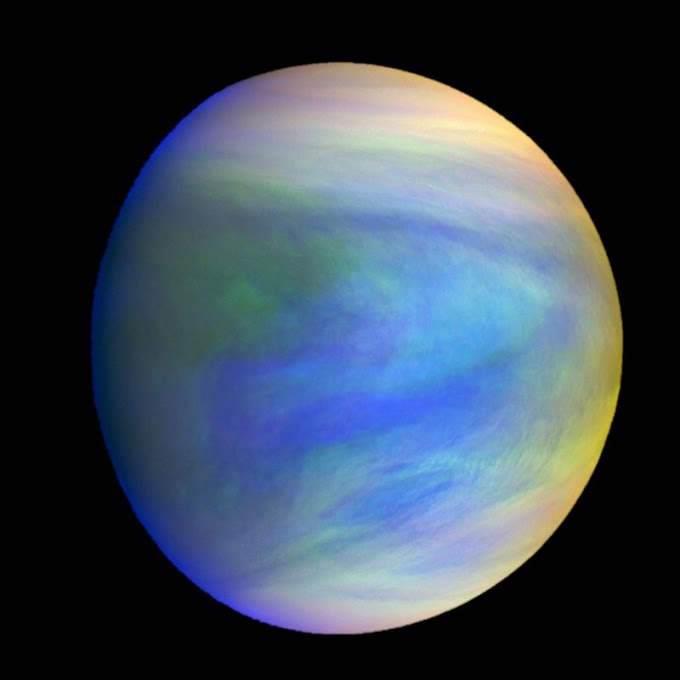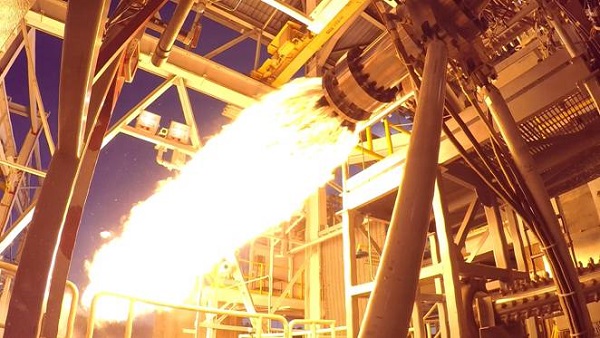 |
| sciencefriday.com |
What is an Aurora?
An aurora is a natural light display that shimmers in the sky. Colorful blue, red, yellow, green, and orange lights shift gently and change shape like softly blowing curtains. The word "aurora" is derived from the name of the Roman goddess of the dawn, Aurora, who travelled from east to west announcing the coming of the sun. Ancient Greek poets used the name metaphorically to refer to dawn, often mentioning its play of colours across the otherwise dark sky. Auroras are visible almost every night near the Arctic and Antarctic Circles, which are about 66.5 degrees north and south of the Equator. In the north, the display is called aurora borealis, or northern lights. In the south, it is called aurora australis, or southern lights.How Auroras are formed?
The activity that creates auroras begins on the sun. The sun is a ball of superhot gases made up of electrically charged particles called ions. The ions, which continuously stream from the sun’s surface, are called the solar wind.
As solar wind approaches the Earth, it meets the Earth’s magnetic field. Without this magnetic field protecting the planet, the solar wind would blow away Earth’s fragile atmosphere, preventing all life. Most of the solar wind is blocked by the magnetosphere, and the ions, forced around the planet, continue to travel farther into the solar system.
Although most of the solar wind is blocked by the magnetosphere, some of the ions become briefly trapped in ring-shaped holding areas around the planet. These areas, in a region of the atmosphere called the ionosphere, are centered around the Earth’s geomagnetic poles. The geomagnetic poles mark the tilted axis of the Earth’s magnetic field.
In the ionosphere, the ions of the solar wind collide with atoms of oxygen and nitrogen from the Earth’s atmosphere. The energy released during these collisions causes a colorful glowing halo around the poles—an aurora. Most auroras happen about 97-1,000 kilometers above the Earth’s surface.
The most active auroras happen when the solar wind is the strongest. The solar wind is usually fairly constant, but solar weather—the heating and cooling of different parts of the sun can change daily. Magnetic storms and active auroras can sometimes interfere with communications. They can disrupt radio and radar signals. Intense magnetic storms can even disable communication satellites.
 |
| spaceplace.nasa.gov |
Coloring an Aurora
The colors of the aurora vary, depending on altitude and the kind of atoms involved. If ions strike oxygen atoms high in the atmosphere, the interaction produces a red glow. This is an unusual aurora—the most familiar display, a green-yellow hue, occurs as ions strike oxygen at lower altitudes. Reddish and bluish light that often appears in the lower fringes of auroras is produced by ions striking atoms of nitrogen. Ions striking hydrogen and helium atoms can produce blue and purple auroras, although our eyes can rarely detect this part of the electromagnetic spectrum.
Forms of auroras
 |
| Source: Wikipedia.org |
There are four main forms that can be seen from the ground, from least to most visible:
- A mild glow, near the horizon. These can be close to the limit of visibility but can be distinguished from moonlit clouds because stars can be seen undiminished through the glow.
- Patches or surfaces that look like clouds.
- Arcs curve across the sky.
- Rays are light and dark stripes across arcs, reaching upwards by various amounts.
- Coronas cover much of the sky and diverge from one point on it.
Some auroras are referred as curtains. The similarity to curtains is often enhanced by folds within the arcs. Arcs can fragment or break up into separate, at times rapidly changing, often rayed features that may fill the whole sky. These are also known as discrete auroras, which are at times bright enough to read a newspaper by at night. These forms are consistent with auroras' being shaped by Earth's magnetic field. The appearances of arcs, rays, curtains, and coronas are determined by the shapes of the luminous parts of the atmosphere and a viewer's position.
Do other planets get auroras?
They sure do! Auroras are not just something that happen on Earth. If a planet has an atmosphere and magnetic field, they probably have auroras.
 |
| These swirls of red light are an aurora on the south pole of Saturn. Image courtesy of NASA/ESA |
 |
| The NASA Hubble Space Telescope took this picture of an aurora on Jupiter using ultraviolet (UV) light. Both Jupiter and Saturn have magnetic fields that are stronger than Earth's and both have extensive radiation belts. The aurorae on Saturn seem, like Earth's, to be powered by the solar wind. However, Jupiter's aurorae are more complex. The Jupiter's main auroral oval is associated with the plasma produced by the volcanic moon, Io and the transport of this plasma within the planet's magnetosphere. In addition, the moons, especially Io, are also powerful sources of aurora. These arise from electric currents along field lines generated by a dynamo mechanism due to the relative motion between the rotating planet and the moving moon. Auroras have also been observed on Venus and Mars. Venus has no magnetic field and so Venusian auroras appear as bright and diffuse patches of varying shape and intensity, sometimes distributed over the full disc of the planet. A Venusian aurora originates when electrons from the solar wind collide with the night-side atmosphere. An aurora was detected on Mars, on 14 August 2004, by the SPICAM instrument aboard Mars Express. Also the first ever extra-solar auroras were discovered in July 2015 over the brown dwarf star LSR J1835+3259. Located just 20 minutes from Iceland’s capital city of Reykjavík – the Aurora Basecamp.Source: icelandnaturally.com Witnessing the northern lights is a transformational bucket-list experience that many people wait years—even a lifetime to see, since the conditions need to be perfect for this spectacular display to take place. The best places in the world are usually closer to the Arctic Circle, including Alaska, Canada, Iceland, Greenland, Norway, Sweden and Finland. One can also spot the southern lights in the southern hemisphere. Still, the northern lights are the star of the show. In order to increase chances of seeing this spectacle one should time trip to a new moon. Since the northern lights can appear and disappear in a snap, it’s important to be on alert throughout the night. Another tip: Weather is also key. Try to find a place where the sky is clear, dark and free of clouds. |






0 Comments